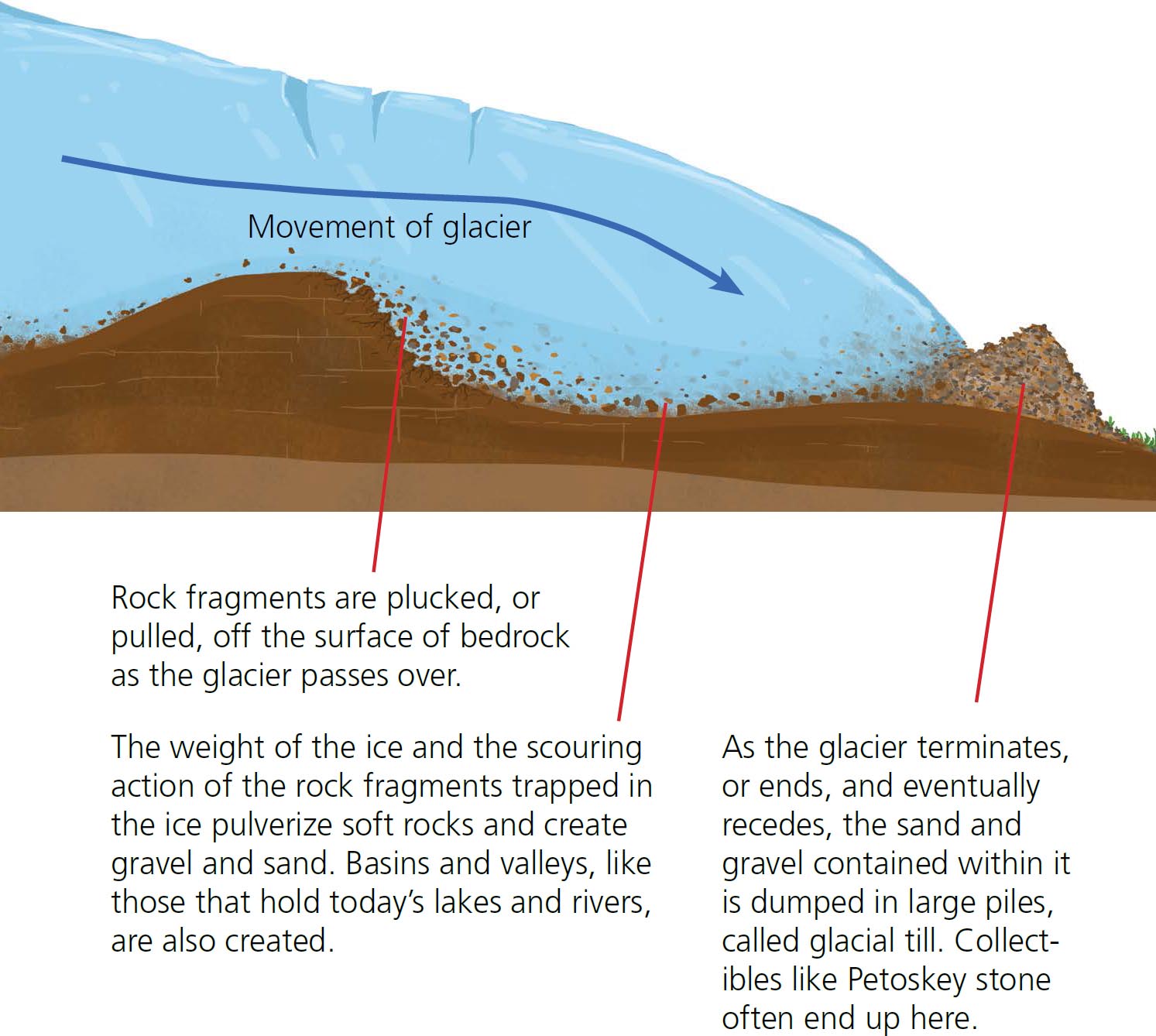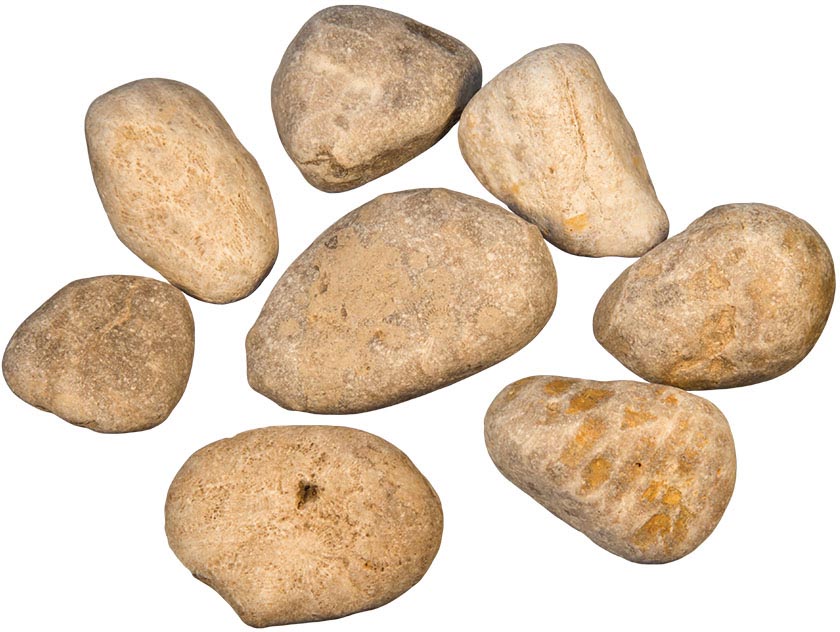
The body of rock containing Petoskey stone remained deeply buried for millions of years beyond the Devonian, and it wasn’t until Earth’s last glacial period, beginning approximately 115,000 years ago and lasting until just around 11,000 years ago, that the Petoskey stone-bearing rock layers were uncovered. Glaciers are immense sheets of slow-moving ice; during the last ice age, they descended from Canada, and their incredible size and weight scoured and bulldozed the landscape. Harder rocks were worn down, while soft rocks, especially limestone, were pulverized. But as deeper rock layers were revealed and subsequently broken up, fragments ranging in size from boulders to pebbles were pushed and scattered all over. This included the layers containing Petoskey stones.
Further weathering in wind, waves, and ice continued to round and smooth many specimens. Others were freed from their host rock only to be again buried in gravel created by the glaciers, which presents us with specimens that are still fairly easy to collect but retain more better-preserved coral features. And, due to the sheer abundance of fossil corals in the region’s Devonian rocks, countless Petoskey stones have already been collected, but countless more are still waiting to be discovered.

As this glacier recedes, it leaves behind large amounts of gravel and boulders originally plucked and scraped from the underlying bedrock.
Glacial Scouring, Plucking, and Dumping


Rounded, smoothed Petoskey stones like these were largely shaped by the destructive action of the last ice age’s glaciers.